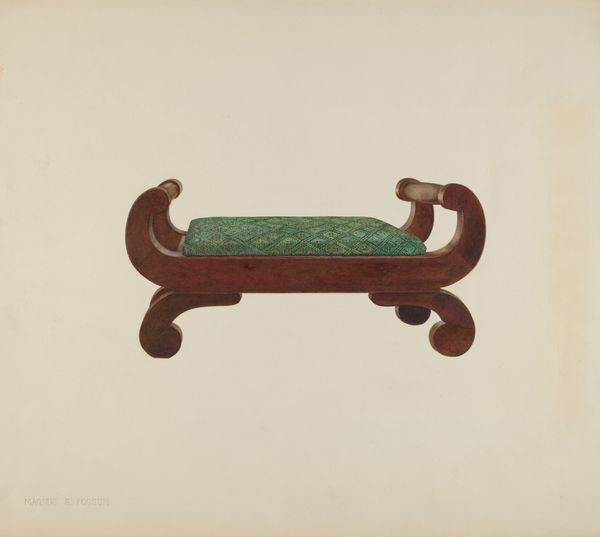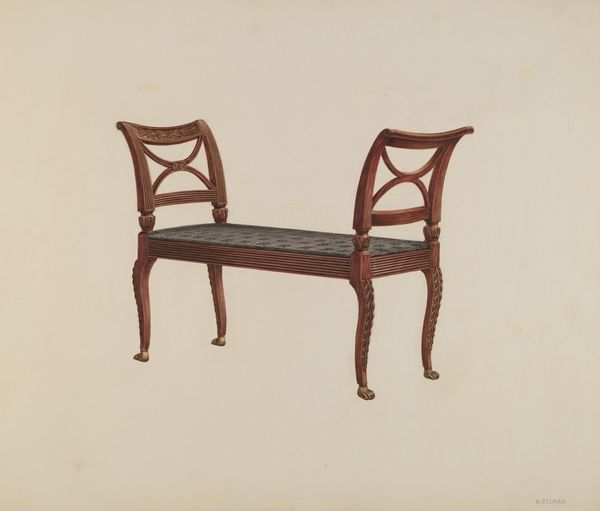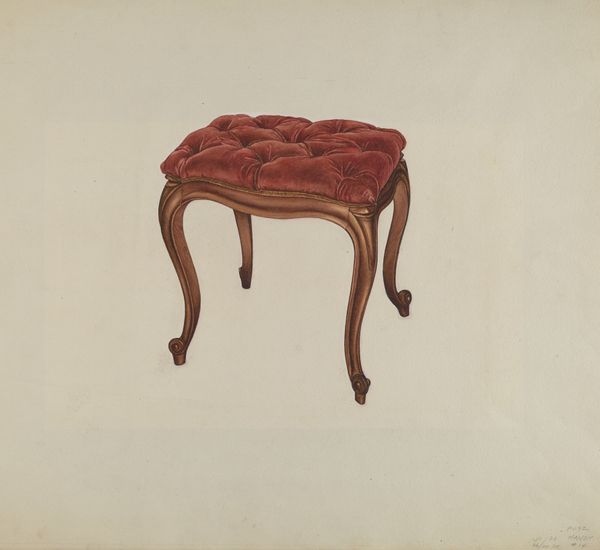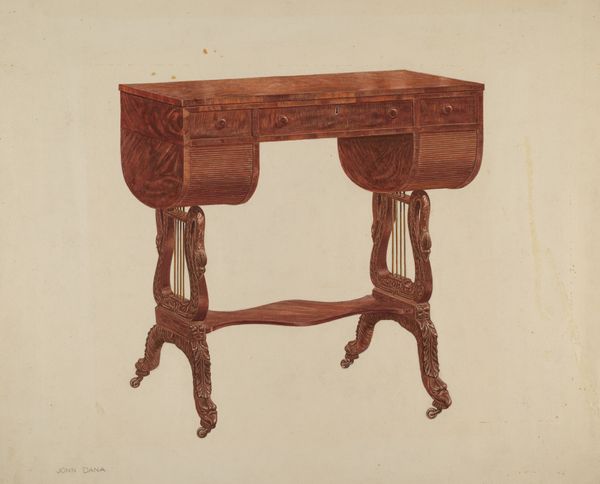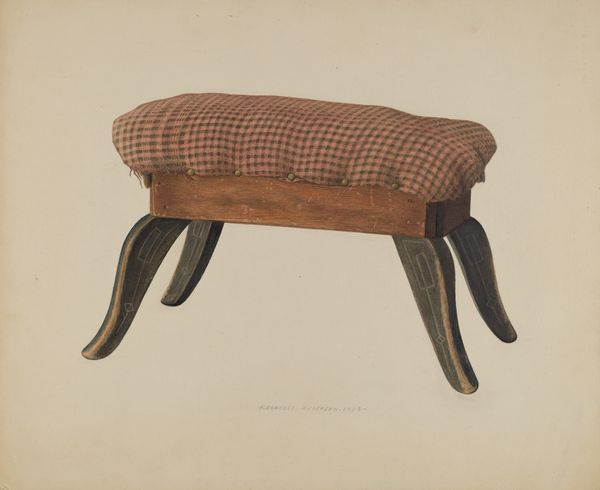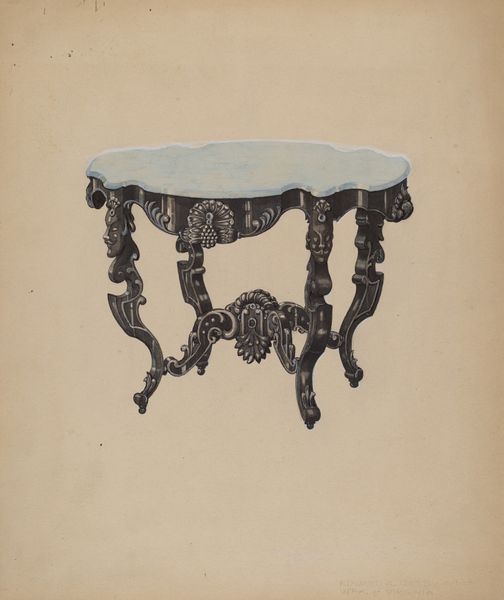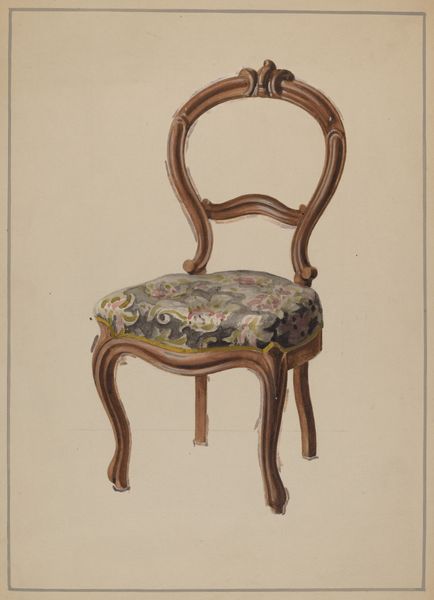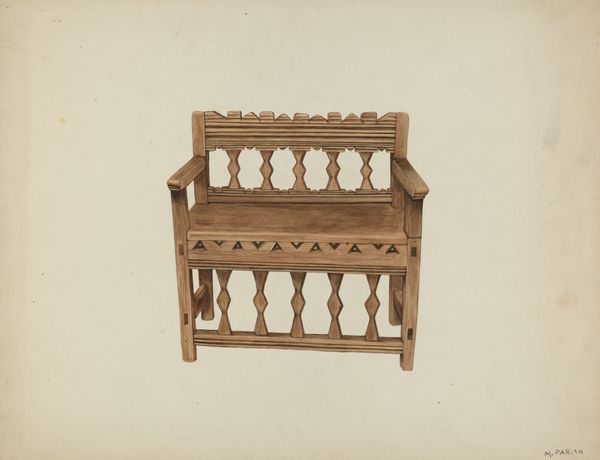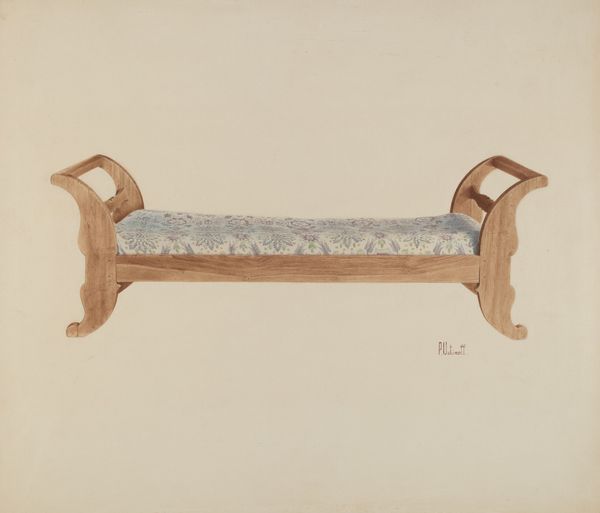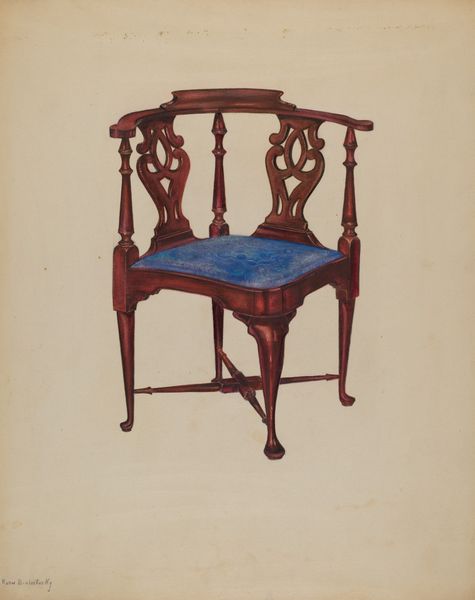
drawing
#
drawing
#
toned paper
#
light pencil work
#
blue ink drawing
#
shading to add clarity
#
old engraving style
#
etching
#
ink drawing experimentation
#
ink colored
#
sketchbook drawing
#
watercolour illustration
Dimensions: overall: 40.9 x 50.6 cm (16 1/8 x 19 15/16 in.) Original IAD Object: none given
Copyright: National Gallery of Art: CC0 1.0
Editor: This is Fred Hassebrock's "Bench in Cemetery Lot," a drawing from around 1941. It's incredibly detailed, almost like an etching, with all these vines and grapes on the ironwork. It’s kind of eerie but beautiful at the same time. How would you interpret this piece? Art Historian: Indeed. The imagery in this work really resonates. The bench itself, placed within the context of a cemetery, becomes more than just a place to rest. Consider the grapes and vines – powerful symbols of both life and death, fertility and sacrifice in many cultures. It’s almost as though Hassebrock is inviting us to contemplate our own mortality. Does the inclusion of the grapes alter your reading of it? Editor: I see what you mean about the grapes being symbolic. I initially just saw them as decoration, but thinking about life cycles in the context of a cemetery... that's a powerful contrast. The ornate style too... is that saying something about remembering the dead? Art Historian: Precisely. The careful, deliberate detail, the old engraving style you pointed out... It all suggests a reverence, a deep respect for tradition and remembrance. The artist invites the viewer to appreciate the beauty even within a somber place, which gives way to broader reflection, perhaps beyond the personal loss and grief. Is there any connection in your mind with the idea of the cyclical nature of time? Editor: Now that you mention it, it does make you think about time and the passing of generations. The bench offers a moment for contemplation amid that cycle. Art Historian: And it invites reflection of how symbols act as cultural memory of something deeply rooted within humanity. What started as a fairly simple drawing now shows to us the symbolic function art performs. Editor: That's so true; I will definitely consider symbolism more closely from now on! Art Historian: And I will remember how important observation can be! Thank you!
Comments
No comments
Be the first to comment and join the conversation on the ultimate creative platform.

